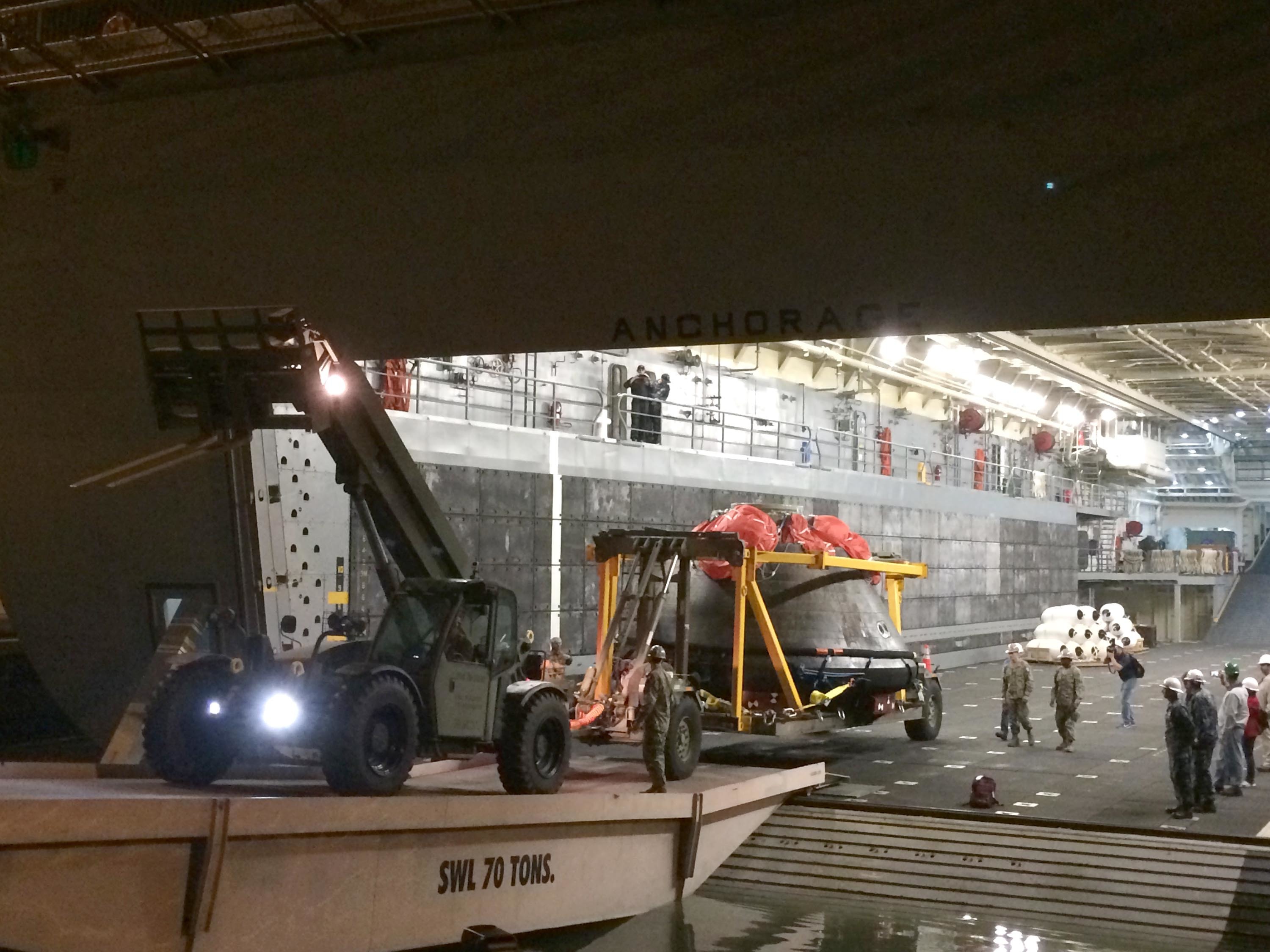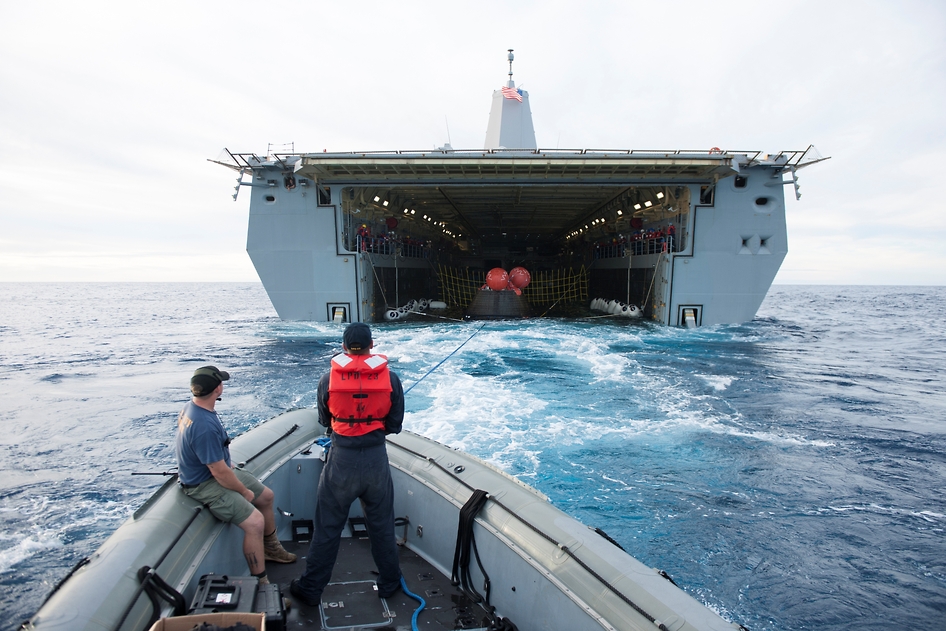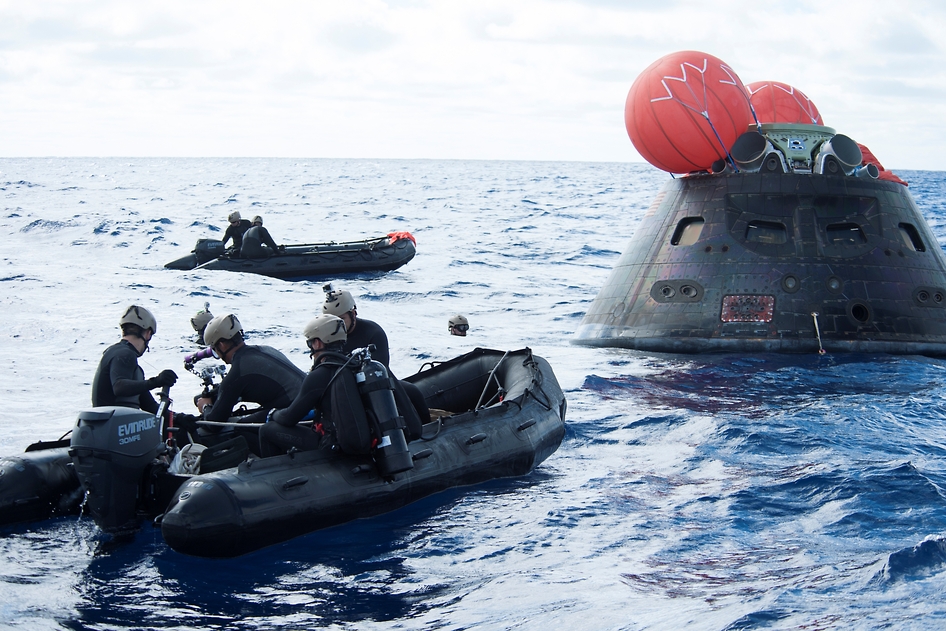NASA’s Orion is the future of manned flight — but that future is still decades away.

NASA’s Orion spacecraft is offloaded from the well deck of the USS Anchorage at a navy base in San Diego.
NASA finally got to test out the Orion spaceship last Friday, but Orion is still a long way from being able to take astronauts to Mars.
Not only does the capsule need to undergo years of additional tests, the super-powered rocket that will eventually power it, called the Space Launch System, or SLS, won’t be ready for manned flight until at least 2021. A Mars mission isn’t expected until the 2030s.
And that’s assuming Congress doesn’t scrap the whole project due to ballooning costs.
NASA officials have said that they hope the Orion/SLS project will inspire kids to study math and science. But its hard to imagine a generation raised on YouTube and six-second Vine videos to be inspired by a project that will take decades to fully realize.
That’s why people lost interest in the International Space Station, says Marco Caceres, a senior space analyst at the Teal Group, a think tank.
“It took a quarter of a century and more than $100 billion to build, launch, and assemble that facility,” Caceres writes in an op-ed for the Huffington Post. “During that time, Michael Jordan won six NBA championships, the Internet was invented, the iPhone, Facebook, texting. Does anyone seriously think Americans care two cents about the space station?”
NASA doesn’t capture the American imagination any more, especially after the U.S. lost the ability to carry astronauts into space when the Space Shuttle program closed in 2011. (We have to pay Russia about $75 million dollars to shuttle our astronauts to the ISS.)

Orion splashed down about 600 miles off the coast of San Diego on Dec. 5.
Strapped for cash, NASA is heavily subsidizing private companies like SpaceX and Boeing to build manned spaceships that will be able to taxi our astronauts to and from low-Earth orbit. NASA hopes at least one of these manned space ships will be operational by 2017.
Sure, NASA’s reliance on private industry has more to due with budget cuts than anything else. But it also reflects a shift in how people view government.
Government used to be an organization that could take us to the moon. Now it’s seen as an inefficient, regulatory burden on tech entrepreneurs like Elon Musk — this generation’s Lance Armstrong.

